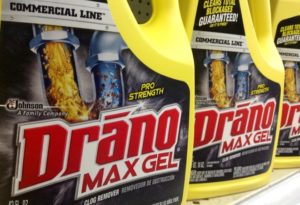Helpful Drain Cleaning Pointers

The possible scenarios are many. Perhaps you are trying to brush your teeth, but quickly discover that the drain is moving far too slowly. Maybe you jump in the shower and quickly wind up standing in a puddle. When these situations arise, your drain probably has a clog.
It is highly advisable to conduct a proper cleaning of your drains no less than every couple of months. Accumulations of dirt, soap, hair and grime can create serious clogs that cause no end of trouble.
Utilize the advice that follows as a way to stop drains from getting clogged in the first place or resolving those clogs if they occur.
Commercial Drain Cleaners
The most clear-cut way to work on a clogged drain is to purchase some commercial cleaning liquid. These types of products are made with bacterial agents designed to cause decomposition of the grime and buildup plugging the pipes. Pouring half a bottle of such a solution in to the drain, waiting several minutes and then flushing the system with water is all that needs to be done to solve the issue.
Clearing The Stopper
The majority of sinks are equipped with a stopper that plugs the drain when the user wants to capture the water. Stoppers are known for collecting dirt and grease, resulting in a slow-moving drain. If this happens, it is important to take a look at the stopper by disconnecting it from the lever mechanism. Then, the debris can be removed and the stopper reattached. If the pipes were not clogged, this is likely the answer that was required.
Mesh Strainers
There can be no doubt that hair is a primary culprit when it comes to a clogged shower drain. Long hair, short hair, all sorts of hair can cause frustrating backups. It simply is not always possible to stop hair from falling into the drain, so a great solution is to place a piece of mesh over the drain itself so that water can still escape, but the errant hairs will not.
Nothing is quite so frustrating as attempting to handle some sort of routine hygiene or cleaning task only to find that water will not go down the drain or does so in an extremely slow manner. The good news is that there are many simple, quick and cost-effective ways not only to address the problem once it happens, but also to prevent it from occurring in the future.
